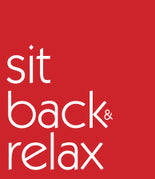Back pain affects 1 in 6 Australians. It can be short-term or become chronic and long-lasting, with back-related issues account for more than one third of workers’ compensation claims in Australian workplaces. Undeniably, back pain has a major impact on both businesses and employees. Although there are multiple workplace risk factors contributing to low back pain, here is some useful information on how to prevent back injuries and reduce back pain specifically in an office setting.
Understanding Forms of Back Pain
Not all back pain is the same. It's important to understand which type of pain you're experiencing to help resolve it. Some pain is due to overexertion from living, pushing, pulling, and moving heavy weight.
Other pain can be due to moving objects that aren't even heavy, but the repetition causes inflammation. These types of back injuries are the most common and overlooked.
Finally, a large number of people who work inside will experience back pain due to sedentary jobs. Sitting or standing for long periods of time can put a lot of stress on the back. This is where a chair can make or break your back pain.
Seven Ways to Prevent Back Pain
Here are seven different ways to approach and correct the causes of back pain in the workplace.
1. Perfect Your Posture
This goes for both stationary jobs and physical jobs. How you distribute your weight will determine how much your back can take. Slouching is such a huge contributor to lower back issues. It is usually a response to weak core muscles.
Even with a weak core, you should still support your posture with a proper ergonomic task chair, and also ensure your chair is set up correctly. And whatever you do, don't sit on your wallet, phone, or money clip, no matter how cushioned your chair is!
2. Improve Lifting Technique
Always lift with your legs and core, with your back straight. Reduce the amount of stress on your back by holding the weight against your chest.
Try to reduce the amount of stretching and twisting when manoeuvring with a heavy object. Also, don't try to save time by trying to do everything by yourself.
For managers and business owners, ensure your workplace health and safety policy includes onsite early intervention and injury management program as well as task analysis and risk assessment.
3. Avoid repetitive strain
Repetitive stress injuries can sneak up on you. If your job involves repetitive tasks, try switching assignments, alternate with heavy lifting and lighter transport tasks or swap roles with a work partner to evenly distribute workloads.
4. Use Ergonomic Equipment
If you work at a desk, repetitive reaching for a mouse can lead to arm and neck strain as well as spinal asymmetry. Using ergonomic office accessories will also work to reduce and prevent back pain.
5. Avoid prolonged sitting
For those who sit most of the day in a chair, focus on proper lower back support or change your standard desk into a height-adjustable desk. Alternating between sitting and standing is a great way to relieve the pressure placed on the spine.
6. Address lifestyle factors
Factors like excess weight, insufficient physical activity, depression, and smoking have also been linked to low back pain. Numerous workplaces are implementing health promotion initiatives as integral components of their health and safety and employee engagement strategies to modify these lifestyle factors.
7. Know when to seek help
Sometimes the hardest problem with back pain at work can be addressing it. This includes identifying your risk factors and recognising the amount of pain you're in.
For employees, communicating this with your superiors to let them know it's affecting your productivity is a great first step. Employers and managers should be willing to invest in the success of their employees – from incorporating more breaks and rest time through to providing proper office supplies and furniture.
Get Rid of Back Pain at Work
If you think your work environment could use an upgrade, consider a new way to Sit Back and Relax. You can try out our office chairs and experience the difference for yourself. Ask us about our free, one-week trial service.
Stop living with pain and start changing the way you work.



